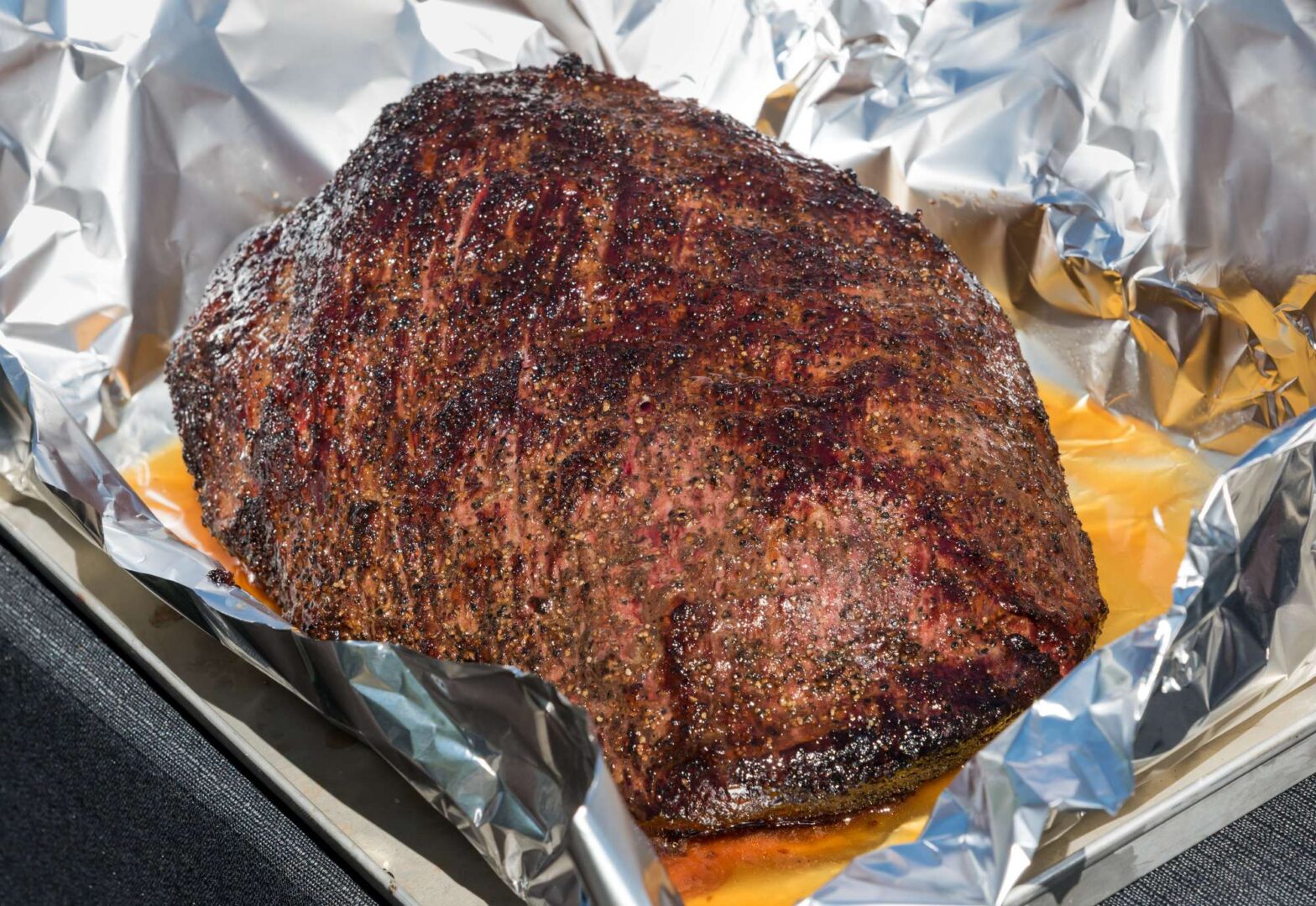There is a belief that if you foil the brisket, the bark will be done with. The question, especially for the outdoor cook who seldom smokes brisket, is: How much truth is there to this?
Take a gander below as I talk about the intricacies of whether or not to wrap brisket during the cook. Should you choose to do it, I will give you some of my best advice on exactly when and how to get the job done.
Foiling the brisket won’t ruin the bark, but it will inevitably soften it. You can reduce this by wrapping the brisket in butcher paper instead of aluminum foil or, if you like the bark nice and crusty, not wrapping it at all.
A good deal of pitmasters will wrap their brisket in aluminum foil or butcher paper to lock in the juices during the final stage of the cook. Some say it keeps the brisket from stalling (a brisket stalls when it starts sweating and its internal temperature doesn’t rise, sometimes for hours).
Then, there are those who swear by not wrapping their brisket at all. They say that meat wrapped in aluminum foil or butcher paper will steam in its wrapping, which moistens and ruins the bark.
The resting time helps the bark firm right back up, no doubt about it. And you could always give the brisket a quick roast post-smoking. And yet, it could be argued that having to do all of this defies the purpose of building the bark in the first place.
So should you, or should you not, foil your brisket?
There are two schools of thought here, and, as with many other things in meat smoking, neither is necessarily wrong or right. At the end of the day, the decision is yours. (I will tell you which camp I belong to in a minute.)
Whenever you are faced with such a dilemma, it is best to try both ways of smoking and see which one tastes best to you and your family. I cannot tell you which way you will go, but I can guarantee you all will not be left without an opinion.
Me?
I don’t foil my brisket at all.
That said, I buy my brisket big and bulky, with good marbling on it; trim the fat to ½ inches and dry-brine it overnight; then cook it low and slow for a good half of the day, the pit stabilized at 250°F (120°C).
Your recipe and technique may be different from mine (darn, it probably is!). And you may not like a charred bark as much as I, the missus, and the kids do when they’re over at house Steen for a cookout.
With hand on heart, I encourage you to try my technique out—and/or any other technique of folks you read and trust out there on the Wild Wild Web—then adjust it to your liking as you develop techniques you call your own.
Wrapping the Brisket Properly
Some folks, especially those who are new to smoking, get foiling all wrong. And it’s no wonder! Many recipes tell you to “foil the brisket” without describing exactly the “when” and the “how”.
So let’s you and I take some time to talk about the proper technique for foiling a brisket:
Never foil a brisket at the beginning of the cook. As with any other cut of meat, brisket must be heated by smoke—hot, airborne gasses that enter the cooking chamber and escape through the chimney—to form the bark and cook the interior.
Wait until the time is right to wrap the brisket. The golden rule is to foil the brisket when it comes to an internal temperature of about 170°F (77°C). How quickly that happens depends on the temperature of the air, the weather conditions, and how hot you keep your cooking chamber.
Wrap with butcher paper, not aluminum foil. Get yourself some pink butcher paper and wrap that brisket nice and tight. Unlike tin foil, butcher paper lets the meat breathe, which means the bark will come out drier and crispier.
Rest the brisket properly. The brisket is cooked when the internal temperature of the meat is at least 200°F (93°C). Take it out of the smoker, lay it flat-side down on a wooden cutting board, remove the wrapping, and rest it for 30 to 60 minutes before carving.
Aluminum Foil vs. Butcher Paper for Brisket
In a nation bound by unity, the debate over whether to use aluminum foil or butcher paper for wrapping brisket has divided meat smokers writ large.
Even if you’re one of those folks who swear by aluminum foil, you cannot deny that a growing number of pitmasters in recent years have made the move to pink butcher paper (the pink color comes from the chemical makeup of the wood pulp it’s made of).
Since aluminum foil traps steam, foiling the brisket can cause the bark to become too soft and mushy. Butcher paper—food-safe, heat-resistant, and with a porous surface—allows the meat to breathe and doesn’t affect the bark that much.
If you don’t happen to have butcher paper right at hand right now, you could achieve a similar, but not the same, effect by poking holes into the aluminum foil (not the brisket).

